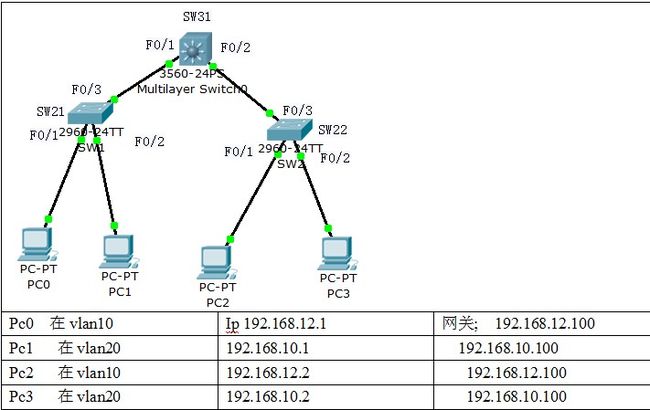- 常用网络工具分析(ping,tcpdump等)
一户董
杂tcpdump网络
写在前面本文看下常用网络工具。1:ping1.1:用途用于检验网络的连通性。1.2:实战在Linux环境中执行:pingwww.sina.com.cn:[root@localhost~]#pingwww.sina.com.cnPINGspool.grid.sinaedge.com(111.62.129.51)56(84)bytesofdata.64bytesfrom111.62.129.51(11
- DeepSeek混合专家模型:低成本高精度革新多语言AI应用
智能计算研究中心
其他
内容概要当前人工智能领域正经历从通用模型向垂直化、场景化应用的关键转型,DeepSeek混合专家模型(MoE)通过突破性的架构设计,为这一进程提供了技术范本。该模型采用分治策略的混合专家架构,通过动态激活670亿参数中的子模块处理特定任务,既保证了模型规模带来的知识广度,又显著降低了计算资源的冗余消耗。在此基础上,其多模态处理能力不仅覆盖80余种自然语言的高精度互译,还实现了视觉符号与文本语义的跨
- 通义灵码AI程序员
天天向上杰
AI编程AIGC人工智能
通义灵码是阿里云与通义实验室联合打造的智能编码辅助工具,基于通义大模型技术,为开发者提供多种编程辅助功能。它支持多种编程语言,包括Java、Python、Go、TypeScript、JavaScript、C/C++、PHP、C#、Ruby等200多种编码语言。通义灵码AI程序员:今年1月,通义灵码AI程序员全面上线,同时支持VSCode、JetBrainsIDEs,是国内首个真正落地的AI程序员。
- 23. AI-概述
真上帝的左手
23.AIai人工智能
文章目录前言一、AI1.简介2.发展3.应用场景前言AI 随着技术的发展,AI正变得越来越强大和普及,其在解决复杂问题和提高人类生活质量方面的潜力日益显现。一、AIAI(ArtificialIntelligence,人工智能)1.简介 AI(ArtificialIntelligence,人工智能)是计算机科学的一个分支,旨在开发智能系统,使其能够执行通常需要人类智能的任务,例如学习、推理、问
- Go Web 开发基础:从入门到实战
一小路一
掌握Go语言:编程世界的进阶钥匙golang前端面试后端服务器
GoWeb开发基础:从入门到实战Go语言因其高效性和简洁性,成为了后端开发的热门选择之一。Go的net/http包提供了强大的Web服务功能,可以帮助我们快速搭建Web应用。本文将带领你从基础开始,逐步了解如何使用Go创建Web服务、处理路由、使用模板引擎、提供静态文件服务,并与数据库进行交互。文章内容包含常见的错误示例和面试题,帮助你更好地理解GoWeb开发。1.使用net/http创建一个简单
- 基于微信小程序的天气预报平台的设计与实现
usp1994
微信小程序小程序
基于微信小程序的天气预报平台的设计与实现DesignandImplementationofaWeatherForecastPlatformBasedonWeChatMiniProgram完整下载链接:基于微信小程序的天气预报平台的设计与实现文章目录基于微信小程序的天气预报平台的设计与实现摘要第一章引言1.1研究背景1.2研究目的1.3研究方法1.4论文结构第二章相关技术介绍2.1微信小程序开发2.
- 如何设置内网IP的端口映射到公网
天才技术宅
智能路由器网络
在现代网络环境中,端口映射(PortMapping)是一项非常实用的技术,它允许用户将内网设备的服务端口映射到公网,使外网用户可以访问内网中的服务。这项技术在远程办公、设备远程控制、游戏服务器、家庭监控等场景中得到了广泛应用。今天,我们将介绍如何实现端口映射,帮助大家在不同网络环境下实现内网设备的公网访问。一、端口映射是什么?端口映射(PortMapping),也称为端口转发(PortForwar
- 腾讯控股销售易!中国CRM市场将迎血腥洗牌?
saas
近期,销售易官宣与腾讯战略合作升级,拉开了Salesforce×阿里云、销售易x腾讯两大阵营战线,标志着中国CRM市场正式进入“双巨头”时代——一方是国际巨头Salesforce联合阿里云的本土化攻势,另一方是本土头部玩家销售易背靠腾讯生态的技术与流量加持。而在这场“神仙打架”的牌局中,曾与销售易齐名的某FCRM厂商却愈发沉寂,让人不禁发问:未来是否只剩Salesforcevs销售易?中小厂商的生
- 【核心算法篇十三】《DeepSeek自监督学习:图像补全预训练方案》
再见孙悟空_
「2025DeepSeek技术全景实战」算法学习计算机视觉deepSeek深度学习transformer人工智能
引言:为什么自监督学习成为AI新宠?在传统监督学习需要海量标注数据的困境下,自监督学习(Self-SupervisedLearning)凭借无需人工标注的特性异军突起。想象一下,如果AI能像人类一样通过观察世界自我学习——这正是DeepSeek图像补全方案的技术哲学。根据,自监督学习通过设计巧妙的"预训练任务"(PretextTask),让模型在无标签数据中自动学习图像语义特征。而图像补全正是这类
- HarmonyOS Next AI开发环境搭建与工具使用
harmonyos
本文旨在深入探讨华为鸿蒙HarmonyOSNext系统(截止目前API12)中AI开发环境搭建与工具使用相关技术细节,基于实际开发实践进行总结。主要作为技术分享与交流载体,难免错漏,欢迎各位同仁提出宝贵意见和问题,以便共同进步。本文为原创内容,任何形式的转载必须注明出处及原作者。一、HarmonyOSNextAI开发环境概述(一)硬件与软件环境需求介绍硬件环境处理器:对于HarmonyOSNext
- HarmonyOS Next智能安防系统中的人脸比对与异构计算实战
harmonyos
本文旨在深入探讨基于华为鸿蒙HarmonyOSNext系统(截止目前API12)构建智能安防系统中人脸比对与异构计算技术的实战应用,基于实际开发经验进行总结。主要作为技术分享与交流载体,难免错漏,欢迎各位同仁提出宝贵意见和问题,以便共同进步。本文为原创内容,任何形式的转载必须注明出处及原作者。一、智能安防系统需求与架构设计(一)功能需求分析实时人脸检测与识别需求在智能安防系统中,实时人脸检测与识别
- HarmonyOS Next智能语音助手的语音合成与模型优化实战
harmonyos
本文旨在深入探讨基于华为鸿蒙HarmonyOSNext系统(截止目前API12)构建智能语音助手过程中语音合成与模型优化技术的实战应用,基于实际开发经验进行总结。主要作为技术分享与交流载体,难免错漏,欢迎各位同仁提出宝贵意见和问题,以便共同进步。本文为原创内容,任何形式的转载必须注明出处及原作者。一、语音助手功能需求与架构规划(一)功能需求梳理语音指令识别需求智能语音助手需要准确识别用户的语音指令
- 全网最全!DeepSeek 新手入门教程合集
人工智能deepseek
如果你是初次接触DeepSeek的普通用户或开发者,面对海量教程却无从下手?别担心!本文为你整理全网最易懂、最实用的DeepSeek学习资源,涵盖快速上手、编程实战、系统手册等,附直达链接,收藏这一篇就够了!一、快速入门指南《DeepSeek入门教程》-博客园亮点:手把手教你注册账号、获取APIKey,并提供Python调用多轮对话的代码示例,适合初级开发者。直达链接:点击查看核心内容:API调用
- 《计算机组成及汇编语言原理》阅读笔记:p1-p8
编程
《计算机组成及汇编语言原理》学习第1天,p1-p8总结,总计8页。一、技术总结1.Intel8088microprocessor(微处理器),1979-1988。2.MS-DOSMicrosoftDiskOperatingSystem的缩写,是一个操作系统(operatingsystem)。3.Moore'sLaw&Moore'ssecondlaw(1)Moore'slawThenumberoft
- Linux操作系统:个人云存储服务搭建开发
暮雨哀尘
Linux的那点事linux运维服务器大数据集群技术nginxmysql
个人云存储服务搭建开发文档一、项目目标搭建一个类似Dropbox的个人云存储服务,实现文件的同步和备份功能,确保数据的安全性和便捷性。二、技术栈操作系统:Linux(推荐使用UbuntuServer或CentOS)云存储软件:Nextcloud或SeafileWeb服务器:Apache或Nginx数据库:MySQL或MariaDBSSL证书:自签名证书或Let'sEncrypt免费证书三、搭建步骤
- Sentinel实战:构建可靠的微服务防护系统
ivwdcwso
安全sentinel微服务架构防护安全java开发
1.引言在微服务架构中,保障系统的可用性和稳定性至关重要。Sentinel作为一个强大的流量控制组件,为我们提供了实现熔断、限流、系统保护等功能的有力工具。本文将通过实际案例,详细介绍Sentinel的使用方法和最佳实践,并探讨如何在容器环境中部署Sentinel。2.Sentinel简介Sentinel是阿里巴巴开源的面向分布式服务架构的流量控制组件,主要以流量为切入点,从流量控制、熔断降级、系
- 【部署】Ktransformer是什么、如何利用单卡24GB显存部署Deepseek-R1 和 Deepseek-V3
仙人掌_lz
人工智能人工智能AI部署自然语言处理
简介KTransformers是一个灵活的、以Python为中心的框架,旨在通过先进的内核优化和放置/并行策略提升HuggingFaceTransformers的使用体验。它具有高度的可扩展性,用户可通过单行代码注入优化模块,获得兼容Transformers的接口、符合OpenAI和Ollama的RESTfulAPI,甚至简化的ChatGPT风格的WebUI。KTransformers的性能优化基
- 深圳SMT贴片加工厂家核心技术及服务优势解析
安德胜SMT贴片
其他
内容概要在电子制造领域,高效、精准的生产能力已成为企业保持竞争力的关键要素。如何通过技术创新与服务优化实现快速交付与品质保障,是当前行业关注的核心议题。深圳作为国内电子制造产业的重要聚集地,其SMT贴片加工厂家通过持续的技术迭代与服务升级,形成了独特的市场竞争力。本文将系统解析该类企业在核心技术与服务模式上的突破路径,涵盖设备精度提升、工艺创新、品控体系完善等关键维度。首先,高精度贴片设备与智能化
- 技术分享:MyBatis SQL 日志解析脚本
£漫步 云端彡
运维趣分享sqljavamybatis日志解析
技术分享:MyBatisSQL日志解析脚本1.脚本功能概述2.实现细节2.1HTML结构2.2JavaScript逻辑3.脚本代码4.使用方法4.1示例5.总结在日常开发中,使用MyBatis作为持久层框架时,我们经常需要查看SQL日志以调试和优化查询。然而,MyBatis的日志输出通常包含占位符和参数信息,这使得直接执行这些SQL语句变得困难。为了解决这个问题,我们开发了一个简单的HTML和Ja
- SMT贴片生产的发展趋势与技术创新解析
安德胜SMT贴片
人工智能
内容概要SMT贴片生产作为现代电子制造的重要组成部分,其发展一直颇具前景与活力。当前,行业内的技术进步与市场需求的快速变化使得SMT贴片生产面临新的机遇与挑战。尤其是在自动化技术方面,许多企业逐步引入更加智能化的设备,从而提升生产效率并降低人为错误。这不仅能够缩短生产周期,还能提高产品的一致性和可靠性。另外,材料科技的进步也促进了SMT贴片生产的变革。新型材料的应用,例如高电导率材料和环保型焊料,
- 技术爱好者不容错过!探秘 Thrive 现代化博客管理系统
秋野酱
前端课程设计java开源javaspringbootvue.js课程设计
探索ThriveX:现代化博客管理系统的技术与实现在当今数字化时代,知识的分享与交流变得愈发重要。对于技术爱好者和从业者而言,一个优质的博客管理系统不仅是知识输出的窗口,更是思想碰撞的平台。今天,让我们一同走进ThriveX,领略其独特的魅力。一、开源助力,点亮项目之星开源的道路充满艰辛与挑战,每一段代码都凝聚着开发者的心血。如果您在了解ThriveX的过程中有所收获,不妨花费短短10秒钟,为这个
- Tomcat 8 安装包下载
m0_74824517
面试学习路线阿里巴巴tomcatjava
Tomcat8安装包下载【下载地址】Tomcat8安装包下载本仓库提供了一个包含Windows和Linux版本的Tomcat8安装包,方便用户快速下载并部署Tomcat8服务器[这里是图片001]项目地址:https://gitcode.com/open-source-toolkit/fda7c简介本仓库提供了一个包含Windows和Linux版本的Tomcat8安装包,方便用户快速下载并部署To
- 猎板 PCB:HDI 技术精要解读
lboyj
人工智能
HDI技术凭借增加盲埋孔的方式,达成了高密度布局,在高端服务器、智能手机、多功能POS机以及安防摄像机等诸多领域均有广泛应用。尤其在通讯和计算机行业中,对HDI线路板有着较高的需求,这在一定程度上有力地推动了科技的持续进步,使得HDI板在国内市场展现出十分乐观的发展前景。然而,HDI技术作为一种特殊工艺,也面临诸多挑战。一方面,其成本相对较高;另一方面,对制造商的生产能力有着严格要求。倘若缺乏先进
- 国鑫DeepSeek 671B本地部署方案:以高精度、高性价比重塑AI推理新标杆
Gooxi国鑫
人工智能服务器
随着DeepSeek大模型应用火爆全球,官方服务器总是被挤爆。而且基于企业对数据安全、网络、算力的更高需求,模型本地化部署的需求日益增长,如何在有限预算内实现高效、精准的AI推理能力,成为众多企业的核心诉求。国鑫作为深耕AI领域的技术先锋,推出基于4台48GRTX4090或8台24GRTX4090服务器的2套DeepSeek“满血”版本地部署方案,以FP16高精度、高性价比、强扩展性三大优势,为企
- Linux:从入门到精通的全面指南
dbsnc1111
linux运维服务器
一、引言Linux作为一种开源操作系统,犹如一座技术宝库,在当今的科技领域中占据着至关重要的地位。它以其卓越的稳定性、高度的安全性和无与伦比的灵活性,在服务器、嵌入式系统、个人计算机、超级计算机等众多领域广泛应用。无论是渴望提升技术水平的个人,还是寻求拓展职业道路的专业人士,学习Linux都无疑是开启新机遇之门的钥匙。以下是关于Linux的详细知识以及学习Linux的经验总结,希望能为正在学习或准
- Linux-ISCSI
DC_BLOG
Linuxlinux服务器
文章目录iSCSIiSCSI配置作者主页:点击!Linux专栏:点击!⏰️创作时间:2025年02月17日19点50分iSCSI协议是没有同步机制的,要想解决同步机制,需要配置集群文件系统或者是分布式文件系统,防止数据不同步的问题iSCSI基于IP协议的技术标准,该技术允许用户通过TCP/IP网络来构建SANiSCCI的基本组成使用3260端口进行传输iSCCI会话的建立是通过启动器(Initat
- 鸿道Intewell操作系统为半导体行业打造高可靠实时控制系统
一RTOS一
鸿道Intewell操作系统实时操作系统半导体行业高可靠控制系统高实时控制系统
半导体行业是现代科技的核心领域,其生产过程高度依赖自动化和精确的实时控制。从芯片制造到封装测试,每一个环节都需要高精度的设备协同工作,以确保产品的质量和性能。随着半导体技术的不断进步,对实时控制系统的性能、可靠性和灵活性提出了更高的要求。传统的控制系统在集成度、扩展性和功能安全方面逐渐暴露出局限性,而国产实时操作系统的发展为半导体行业提供了新的机遇。随着半导体技术的不断演进,芯片制程日益缩小,对生
- SMT贴片加工_锡膏的作用
CIT_PCBA
PCBApcb工艺贴片smt制造
随着现代电子制造业的飞速发展,表面贴装技术(SurfaceMountTechnology,简称SMT)已成为电子组装领域的核心技术。在SMT生产过程中,对于锡膏的使用是非常多的,它直接影响到电路板的质量与性能。本文旨在深入探讨锡膏在SMT中的作用及其对电子制造业的重要性。锡膏及其在SMT中的作用锡膏是一种由微细金属粒子(通常为锡和铅或无铅合金)、助焊剂和少量其他化学品组成的浆料。在SMT生产线上,
- SMT贴片加工中回流焊接机的关键工艺
CIT_PCBA
pcb工艺制造
SMT贴片指的是在PCB基础上进行加工的系列工艺流程的简称。PCB(PrintedCircuitBoard)意为印刷电路板。(原文:SMT贴片指的是在PCB基础上进行加工的系列工艺流程的简称PCB(PrintedCircuitBoard))SMT是表面组装技术(表面贴装技术)(SurfaceMountedTechnology的缩写),是目前电子组装行业里最流行的一种技术和工艺。电子电路表面组装技术
- 网络技术变迁:从IPv4走向IPv6
是垚不是土
网络技术变迁服务器网络网络协议安全ip
目录前言旧时代产物:IPv4什么是IPv4?IPv4的工作方式IPv4的缺点为什么要从IPv4过渡到IPv6?走向IPv6:新一代互联网协议IPv6的技术特性我们需要过渡技术双栈(DualStack)隧道技术(Tunneling)NAT64/DNS64总结:IPv4与IPv6的时代更替与科技发展从技术演进角度看从时代发展角度看从科技发展角度看从全球互联网治理角度看从时代更替角度看结语前言IP协议是
- apache ftpserver-CentOS config
gengzg
apache
<server xmlns="http://mina.apache.org/ftpserver/spring/v1"
xmlns:xsi="http://www.w3.org/2001/XMLSchema-instance"
xsi:schemaLocation="
http://mina.apache.o
- 优化MySQL数据库性能的八种方法
AILIKES
sqlmysql
1、选取最适用的字段属性 MySQL可以很好的支持大数据量的存取,但是一般说来,数据库中的表越小,在它上面执行的查询也就会越快。因此,在创建表的时候,为了获得更好的 性能,我们可以将表中字段的宽度设得尽可能小。例如,在定义邮政编码这个字段时,如果将其设置为CHAR(255),显然给数据库增加了不必要的空间,甚至使用VARCHAR这种类型也是多余的,因为CHAR(6)就可以很
- JeeSite 企业信息化快速开发平台
Kai_Ge
JeeSite
JeeSite 企业信息化快速开发平台
平台简介
JeeSite是基于多个优秀的开源项目,高度整合封装而成的高效,高性能,强安全性的开源Java EE快速开发平台。
JeeSite本身是以Spring Framework为核心容器,Spring MVC为模型视图控制器,MyBatis为数据访问层, Apache Shiro为权限授权层,Ehcahe对常用数据进行缓存,Activit为工作流
- 通过Spring Mail Api发送邮件
120153216
邮件main
原文地址:http://www.open-open.com/lib/view/open1346857871615.html
使用Java Mail API来发送邮件也很容易实现,但是最近公司一个同事封装的邮件API实在让我无法接受,于是便打算改用Spring Mail API来发送邮件,顺便记录下这篇文章。 【Spring Mail API】
Spring Mail API都在org.spri
- Pysvn 程序员使用指南
2002wmj
SVN
源文件:http://ju.outofmemory.cn/entry/35762
这是一篇关于pysvn模块的指南.
完整和详细的API请参考 http://pysvn.tigris.org/docs/pysvn_prog_ref.html.
pysvn是操作Subversion版本控制的Python接口模块. 这个API接口可以管理一个工作副本, 查询档案库, 和同步两个.
该
- 在SQLSERVER中查找被阻塞和正在被阻塞的SQL
357029540
SQL Server
SELECT R.session_id AS BlockedSessionID ,
S.session_id AS BlockingSessionID ,
Q1.text AS Block
- Intent 常用的用法备忘
7454103
.netandroidGoogleBlogF#
Intent
应该算是Android中特有的东西。你可以在Intent中指定程序 要执行的动作(比如:view,edit,dial),以及程序执行到该动作时所需要的资料 。都指定好后,只要调用startActivity(),Android系统 会自动寻找最符合你指定要求的应用 程序,并执行该程序。
下面列出几种Intent 的用法
显示网页:
- Spring定时器时间配置
adminjun
spring时间配置定时器
红圈中的值由6个数字组成,中间用空格分隔。第一个数字表示定时任务执行时间的秒,第二个数字表示分钟,第三个数字表示小时,后面三个数字表示日,月,年,< xmlnamespace prefix ="o" ns ="urn:schemas-microsoft-com:office:office" />
测试的时候,由于是每天定时执行,所以后面三个数
- POJ 2421 Constructing Roads 最小生成树
aijuans
最小生成树
来源:http://poj.org/problem?id=2421
题意:还是给你n个点,然后求最小生成树。特殊之处在于有一些点之间已经连上了边。
思路:对于已经有边的点,特殊标记一下,加边的时候把这些边的权值赋值为0即可。这样就可以既保证这些边一定存在,又保证了所求的结果正确。
代码:
#include <iostream>
#include <cstdio>
- 重构笔记——提取方法(Extract Method)
ayaoxinchao
java重构提炼函数局部变量提取方法
提取方法(Extract Method)是最常用的重构手法之一。当看到一个方法过长或者方法很难让人理解其意图的时候,这时候就可以用提取方法这种重构手法。
下面是我学习这个重构手法的笔记:
提取方法看起来好像仅仅是将被提取方法中的一段代码,放到目标方法中。其实,当方法足够复杂的时候,提取方法也会变得复杂。当然,如果提取方法这种重构手法无法进行时,就可能需要选择其他
- 为UILabel添加点击事件
bewithme
UILabel
默认情况下UILabel是不支持点击事件的,网上查了查居然没有一个是完整的答案,现在我提供一个完整的代码。
UILabel *l = [[UILabel alloc] initWithFrame:CGRectMake(60, 0, listV.frame.size.width - 60, listV.frame.size.height)]
- NoSQL数据库之Redis数据库管理(PHP-REDIS实例)
bijian1013
redis数据库NoSQL
一.redis.php
<?php
//实例化
$redis = new Redis();
//连接服务器
$redis->connect("localhost");
//授权
$redis->auth("lamplijie");
//相关操
- SecureCRT使用备注
bingyingao
secureCRT每页行数
SecureCRT日志和卷屏行数设置
一、使用securecrt时,设置自动日志记录功能。
1、在C:\Program Files\SecureCRT\下新建一个文件夹(也就是你的CRT可执行文件的路径),命名为Logs;
2、点击Options -> Global Options -> Default Session -> Edite Default Sett
- 【Scala九】Scala核心三:泛型
bit1129
scala
泛型类
package spark.examples.scala.generics
class GenericClass[K, V](val k: K, val v: V) {
def print() {
println(k + "," + v)
}
}
object GenericClass {
def main(args: Arr
- 素数与音乐
bookjovi
素数数学haskell
由于一直在看haskell,不可避免的接触到了很多数学知识,其中数论最多,如素数,斐波那契数列等,很多在学生时代无法理解的数学现在似乎也能领悟到那么一点。
闲暇之余,从图书馆找了<<The music of primes>>和<<世界数学通史>>读了几遍。其中素数的音乐这本书与软件界熟知的&l
- Java-Collections Framework学习与总结-IdentityHashMap
BrokenDreams
Collections
这篇总结一下java.util.IdentityHashMap。从类名上可以猜到,这个类本质应该还是一个散列表,只是前面有Identity修饰,是一种特殊的HashMap。
简单的说,IdentityHashMap和HashM
- 读《研磨设计模式》-代码笔记-享元模式-Flyweight
bylijinnan
java设计模式
声明: 本文只为方便我个人查阅和理解,详细的分析以及源代码请移步 原作者的博客http://chjavach.iteye.com/
import java.util.ArrayList;
import java.util.Collection;
import java.util.HashMap;
import java.util.List;
import java
- PS人像润饰&调色教程集锦
cherishLC
PS
1、仿制图章沿轮廓润饰——柔化图像,凸显轮廓
http://www.howzhi.com/course/retouching/
新建一个透明图层,使用仿制图章不断Alt+鼠标左键选点,设置透明度为21%,大小为修饰区域的1/3左右(比如胳膊宽度的1/3),再沿纹理方向(比如胳膊方向)进行修饰。
所有修饰完成后,对该润饰图层添加噪声,噪声大小应该和
- 更新多个字段的UPDATE语句
crabdave
update
更新多个字段的UPDATE语句
update tableA a
set (a.v1, a.v2, a.v3, a.v4) = --使用括号确定更新的字段范围
- hive实例讲解实现in和not in子句
daizj
hivenot inin
本文转自:http://www.cnblogs.com/ggjucheng/archive/2013/01/03/2842855.html
当前hive不支持 in或not in 中包含查询子句的语法,所以只能通过left join实现。
假设有一个登陆表login(当天登陆记录,只有一个uid),和一个用户注册表regusers(当天注册用户,字段只有一个uid),这两个表都包含
- 一道24点的10+种非人类解法(2,3,10,10)
dsjt
算法
这是人类算24点的方法?!!!
事件缘由:今天晚上突然看到一条24点状态,当时惊为天人,这NM叫人啊?以下是那条状态
朱明西 : 24点,算2 3 10 10,我LX炮狗等面对四张牌痛不欲生,结果跑跑同学扫了一眼说,算出来了,2的10次方减10的3次方。。我草这是人类的算24点啊。。
然后么。。。我就在深夜很得瑟的问室友求室友算
刚出完题,文哥的暴走之旅开始了
5秒后
- 关于YII的菜单插件 CMenu和面包末breadcrumbs路径管理插件的一些使用问题
dcj3sjt126com
yiiframework
在使用 YIi的路径管理工具时,发现了一个问题。 <?php
- 对象与关系之间的矛盾:“阻抗失配”效应[转]
come_for_dream
对象
概述
“阻抗失配”这一词组通常用来描述面向对象应用向传统的关系数据库(RDBMS)存放数据时所遇到的数据表述不一致问题。C++程序员已经被这个问题困扰了好多年,而现在的Java程序员和其它面向对象开发人员也对这个问题深感头痛。
“阻抗失配”产生的原因是因为对象模型与关系模型之间缺乏固有的亲合力。“阻抗失配”所带来的问题包括:类的层次关系必须绑定为关系模式(将对象
- 学习编程那点事
gcq511120594
编程互联网
一年前的夏天,我还在纠结要不要改行,要不要去学php?能学到真本事吗?改行能成功吗?太多的问题,我终于不顾一切,下定决心,辞去了工作,来到传说中的帝都。老师给的乘车方式还算有效,很顺利的就到了学校,赶巧了,正好学校搬到了新校区。先安顿了下来,过了个轻松的周末,第一次到帝都,逛逛吧!
接下来的周一,是我噩梦的开始,学习内容对我这个零基础的人来说,除了勉强完成老师布置的作业外,我已经没有时间和精力去
- Reverse Linked List II
hcx2013
list
Reverse a linked list from position m to n. Do it in-place and in one-pass.
For example:Given 1->2->3->4->5->NULL, m = 2 and n = 4,
return
- Spring4.1新特性——页面自动化测试框架Spring MVC Test HtmlUnit简介
jinnianshilongnian
spring 4.1
目录
Spring4.1新特性——综述
Spring4.1新特性——Spring核心部分及其他
Spring4.1新特性——Spring缓存框架增强
Spring4.1新特性——异步调用和事件机制的异常处理
Spring4.1新特性——数据库集成测试脚本初始化
Spring4.1新特性——Spring MVC增强
Spring4.1新特性——页面自动化测试框架Spring MVC T
- Hadoop集群工具distcp
liyonghui160com
1. 环境描述
两个集群:rock 和 stone
rock无kerberos权限认证,stone有要求认证。
1. 从rock复制到stone,采用hdfs
Hadoop distcp -i hdfs://rock-nn:8020/user/cxz/input hdfs://stone-nn:8020/user/cxz/运行在rock端,即源端问题:报版本
- 一个备份MySQL数据库的简单Shell脚本
pda158
mysql脚本
主脚本(用于备份mysql数据库): 该Shell脚本可以自动备份
数据库。只要复制粘贴本脚本到文本编辑器中,输入数据库用户名、密码以及数据库名即可。我备份数据库使用的是mysqlump 命令。后面会对每行脚本命令进行说明。
1. 分别建立目录“backup”和“oldbackup” #mkdir /backup #mkdir /oldbackup
- 300个涵盖IT各方面的免费资源(中)——设计与编码篇
shoothao
IT资源图标库图片库色彩板字体
A. 免费的设计资源
Freebbble:来自于Dribbble的免费的高质量作品。
Dribbble:Dribbble上“免费”的搜索结果——这是巨大的宝藏。
Graphic Burger:每个像素点都做得很细的绝佳的设计资源。
Pixel Buddha:免费和优质资源的专业社区。
Premium Pixels:为那些有创意的人提供免费的素材。
- thrift总结 - 跨语言服务开发
uule
thrift
官网
官网JAVA例子
thrift入门介绍
IBM-Apache Thrift - 可伸缩的跨语言服务开发框架
Thrift入门及Java实例演示
thrift的使用介绍
RPC
POM:
<dependency>
<groupId>org.apache.thrift</groupId>

